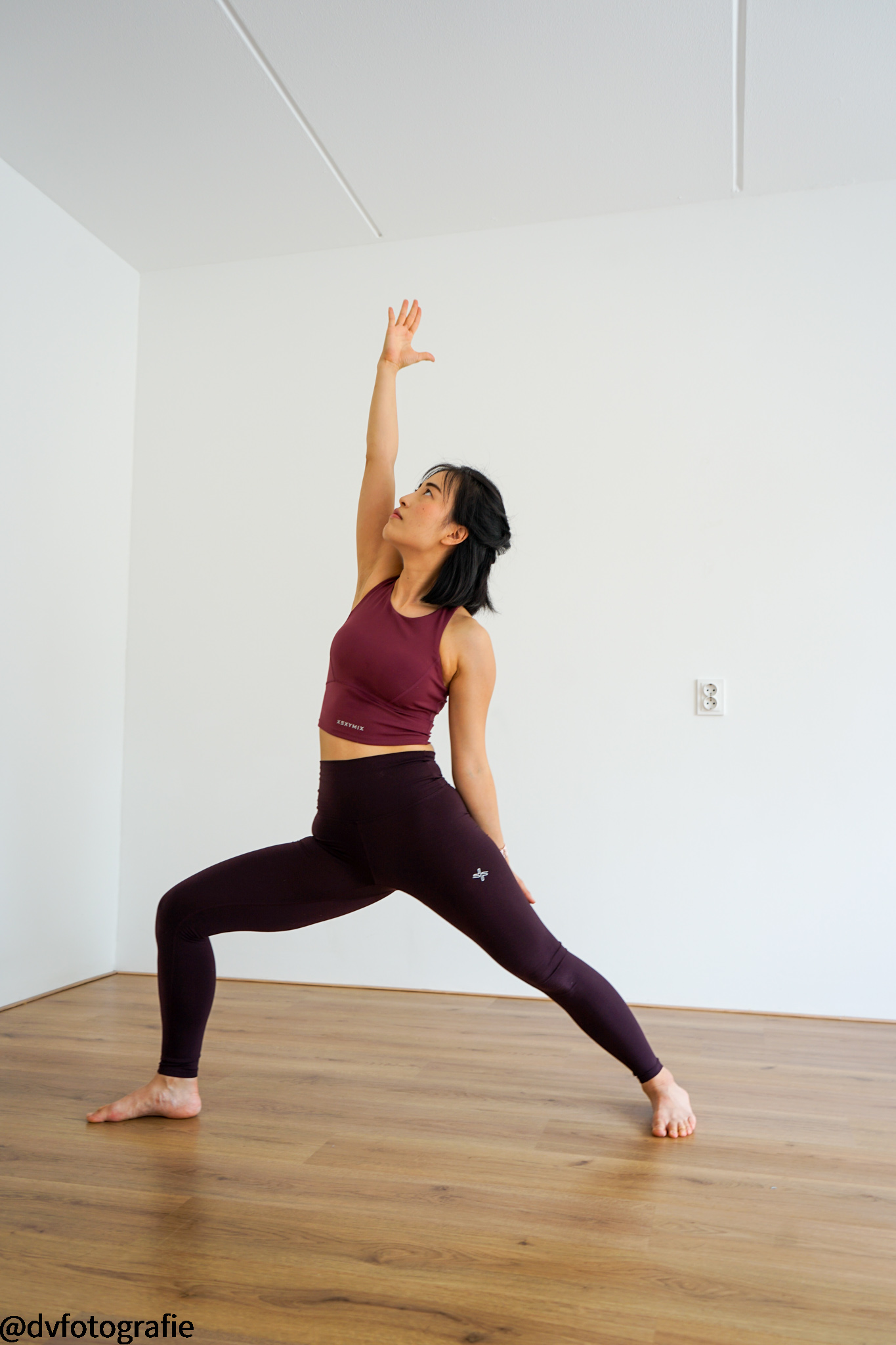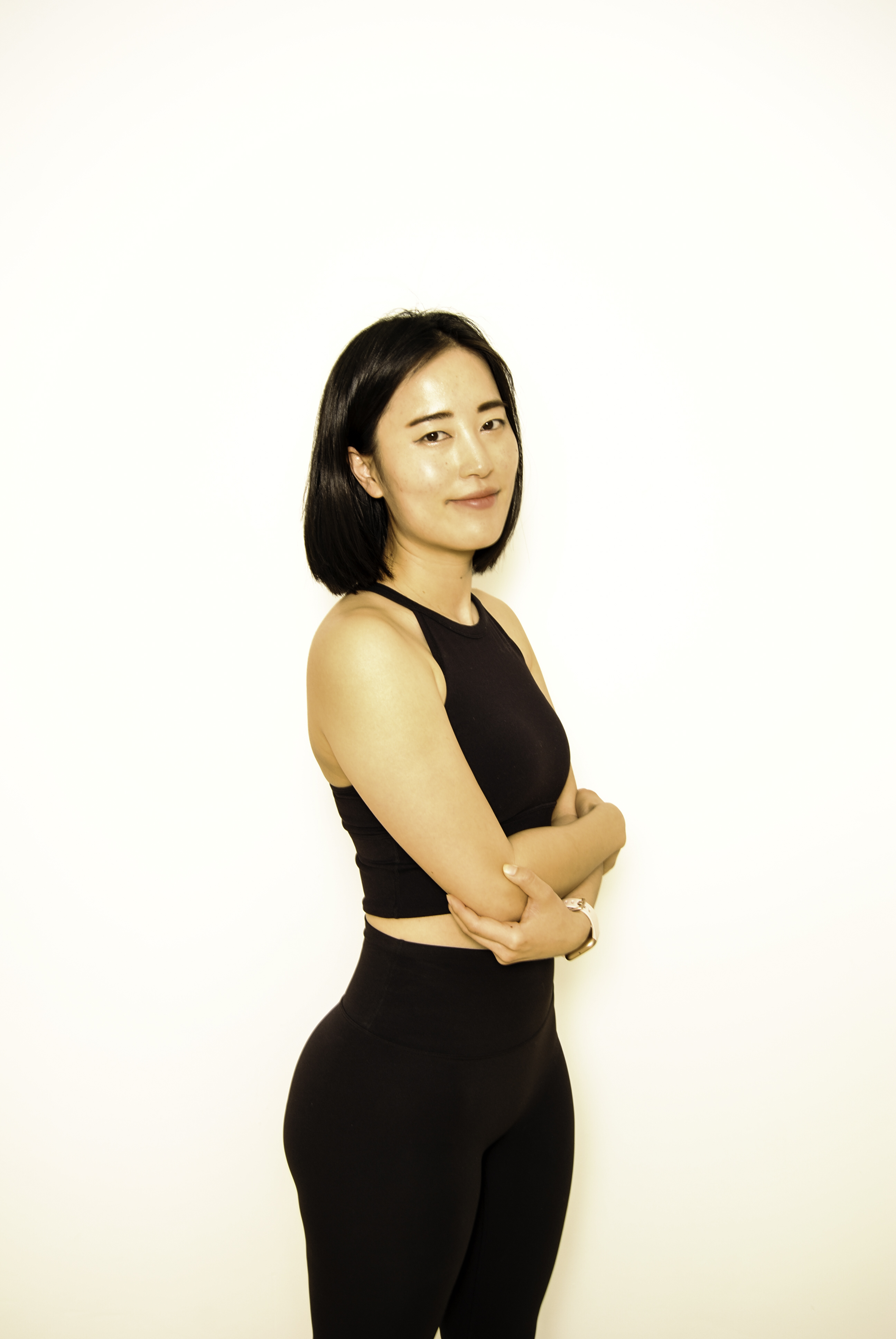︎
Your Body Talks
Jihee Choi
To stay fit, we spend a part of our 24 hours a day visiting the gym and exercising. When we exercise, we start to pay more attention to when to rest and when to breathe in and out, something we've been doing unconsciously. Besides, we also begin to think about what to eat and drink to get the maximum effect of exercise. That's why I get questions from students about what to eat, drink and do before classes quite often. Eating well is just as important as exercising, and drinking water is just as important as eating. So what we eat and drink is closely related to our health.
In yoga, it is often expressed as 'listening to the body.' Because yoga is based on mental and physical training, it is said that instead of forcing yourself to follow other people's postures, you need to listen to your own body, give yourself a rest when you are tired, and drink water when you want to drink. However, there has to be an idea of when, how, and what to consume 'better.'
What and how to drink?
This is a question I naturally come across while meeting various yogis (yogi practitioners) in class. I often get questions about drinks before and after hot yoga. There is no one answer to that. You can rest when you are tired and drink when you want to drink water. It's just important to get the right timing to drink water, for example, while in a 'Mountain pose(Tadasana)' or while sitting for a while during class. Some experienced yogis do not drink a sip of water during the hot yoga class, but in most cases, I recommend drinking water whenever you want to drink it in the middle of classes. During class, I prefer to drink water rather than other beverages. The difference between beverage and water is mainly the amount of electrolyte(mineral) it contains, which helps the absorption. Apparently, beverages cannot replace meals but could help you fill the gaps immediately, lacking as much as you sweat. If you feel extremely dehydrated, beverages such as coconut water, juice, or sweetened beverages(ionic drinks) are helpful. The more severe the dehydration, the more effective coconut water or ionized beverages are. When I returned to class after half a year after lockdown, I had a hard time without even knowing that I was dehydrated. Two paracetamol pills couldn't solve severe symptoms from motion sickness or headaches. But it disappeared with three glasses of coconut water. I had coconut water that day as a replacement for the meal since I had no appetite, but it turned out to be the water of life. Since I found out that I was, in fact, dehydrated, I started to be more careful to drink water during the class.
What and how to eat?
It is recommended to finish a hearty meal at least two to three hours before classes. When you exercise, the blood supply to the muscles increases, which means the flow to other parts decreases. That's why you often feel uncomfortable when you exercise right after a meal. For the same reason, it is recommended to avoid spicy foods if you are going to have a meal before the exercise. I also tend to avoid classes with an empty stomach. For hot yoga classes, the temperature often exceeds 30 degrees. In such a warm environment, an empty stomach may worsen dizziness. If you're used to doing yoga or workouts with an empty stomach, it won't be a problem. The important thing is to listen carefully to your body to find the right answer for you. In my early morning class, my favorite snacks are bananas and diet shakes. If you are worried about snacking alone, I recommend coconut water or an ionized beverage that you can drink with water during class. After classes, it is most important to drink enough water immediately. Then you can have some bananas, shakes, yogurt, or fruits such as grapes and apples as some snacks before meals. After the body heat has cooled down to some extent, you can have a regular meal comfortably.
Taking care of your health may mean listening to your body. Exercising is listening to where your body hurts, how to burn fat and calories, and strengthen muscles. Likewise, you can naturally eat healthy by listening to what your body needs and what it makes you feel comfortable. I hope that each of us can continue a healthy life through dialogue with our own bodies.
[July, 2021]
︎
내 몸과 소통하기
최지희
요가에서는 흔히 ‘몸의 말’을 들으라고 표현한다. 요가는 정신 수련을 기본 바탕으로 하므로 억지로 남들의 자세를 따라하기보다는 자신의 몸의 소리에 귀 기울여, 본인이 지칠 때 쉬어주고, 물도 마시고 싶을 때 마시면 된다고 이야기한다. 다만 언제, 어떻게, 무엇을 섭취하는 것이 더 ‘좋은’ 방법인지는 있기야 하겠다.
무엇을, 어떻게 마실까?
수업 시 다양한 yogi(요가 수련자)들을 만나면서 자연스레 접하는 질문이다. 특히 핫 요가 전후로 음료에 관한 질문을 자주 듣는다. 정답은 없다. 본인이 지칠 때 쉬고, 물도 마시고 싶을 때 마시면 된다. 단지 물을 마시는 타이밍을 잘 잡는 것이 중요한데, 수업 중에는 ‘산 자세’ 혹은 잠시 앉아 있을 때 마시는 것이 좋다. 숙련된 분의 경우 핫 요가를 하더라도 물 한 모금 마시지 않는 경우도 있지만, 대부분의 경우 수업 중간에 물을 마시고 싶을 때마다 마시라고 권유하는 편이다. 수업 중엔 개인적으로 물을 가장 선호한다. 음료와 물은 전해질(미네랄) 차이가 있어 흡수율이 다르다는 차이점이 있다. 물론 음료가 끼니를 대체할 수는 없지만, 땀을 흘린 만큼 모자란 부분을 음료가 어느 정도 즉각적으로 메워줄 수 있다. 특히 탈수 증세가 심하다면 코코넛 워터나 주스, 혹은 단맛이 가미된 음료(이온 음료)가 확실히 도움이 된다. 록다운 이후 반년 만에 복귀한 수업에서, 탈수증세 인지도 모른 채 애를 먹었던 적이 있다. 심한 멀미 증상, 파라세타몰 두 알로도 해결되지 않았던 두통 증세가 거짓말처럼 코코넛워터 석 잔에 말끔히 사라졌다. 식욕이 없어 마신 코코넛 워터가 생명수가 된 것이다. 그것이 탈수증상인 걸 알고 난 이후로, 좀 더 수업 중에 신경 써서 물을 마시게 되었고, 특히 코코넛 워터를 자주 챙겨 마시고 있다.
무엇을, 어떻게 먹어야 할까?
든든한 한 끼 식사는 최소 수업 두세 시간 전에 끝내는 걸 권한다. 운동할 때 근육에 혈액의 공급이 더 많아지면서 다른 부위에 혈액의 공급량이 줄어들기 때문에, 식사 직후에 운동할 경우 속이 불편할 수 있다. 따라서 식사를 하더라도 너무 맵거나 자극적인 음식은 피하는 걸 권한다. 개인적으로 공복에 수업은 피하는 편이다. 핫 요가 수업은 기본적으로 30도를 웃도는 환경이기 때문에 공복일 경우 어지럼증이 더 심해질 수 있다. 하지만 평소 본인이 공복 유산소 및 공복에 요가를 하는 데 적응이 되었다면 상관없다. 몸의 말을 잘 들으면 정답이 나올 것이다. 이른 오전수업을 하기 전 특히 애용하는 간편식으로는 바나나와 쉐이크가 있다. 간식 섭취만으로 불안할 경우, 수업 때 물과 함께 마실 수 있는 코코넛워터나 이온 음료를 추천해 드린다. 수업 직후에는 충분한 수분 섭취가 우선이고, 그 이후로 식사 전 간식처럼 가볍게 바나나, 쉐이크, 요거트 혹은 포도, 사과 등의 과일이 도움이 된다. 어느 정도 몸의 열기가 식고 난 후에는 일반식을 편하게 드시면 된다.
건강에 신경을 쓴다는 것은 내 몸의 소리에 귀를 기울인다는 것을 뜻하지 않을까. 내 몸이 어디가 아픈지, 또 어떤 자세를 통해 지방을 태우고 근육을 단련시키는지를 듣는 것이 운동의 과정이라면, 내 몸에 무엇이 필요하고 어떤 것을 통해 편안함을 느끼는지에 귀 기울이는 노력은 자연스럽고 건강한 섭취로 이어질 것이다. 각자 자신의 몸과 올바른 소통을 통해 건강한 생활을 이어갈 수 있기를 바란다.
[2021, 7월]

Writer
Jihee Choi
Jihee is a yoga, pilates, and barre instructor. She had studied biology and biochemistry in Korea, and later in 2017, she moved to the Netherlands with her partner and a dog. To follow her heart, she wanted to challenge herself and 2 years later completed a Pilates teacher training in Rotterdam and Hatha teacher training in the UK. She constantly has taken part in multiple courses and workshops. With her super positive vibes and cheerful energy, she loves to share her knowledge and experiences with all of the yoginis to guide them on their journey.
Jihee is a yoga, pilates, and barre instructor. She had studied biology and biochemistry in Korea, and later in 2017, she moved to the Netherlands with her partner and a dog. To follow her heart, she wanted to challenge herself and 2 years later completed a Pilates teacher training in Rotterdam and Hatha teacher training in the UK. She constantly has taken part in multiple courses and workshops. With her super positive vibes and cheerful energy, she loves to share her knowledge and experiences with all of the yoginis to guide them on their journey.
최지희
최지희는 요가, 필라테스, 바 강사이다. 한국에서 생물학과 생화학을 전공했으며, 2017년에 남편과 강아지와 함께 네덜란드로 이주한 후 새로운 분야에 도전하고자 요가강사로 전직했다. 2019년에 로테르담에서 필라테스 자격증, 영국에서 하타 요가강사 200시간을 이수했으며 현재도 꾸준히 요가 워크샵 및 선생과정을 이수하고 있다. 다양한 운동을 배우는 것을 좋아하고 활발하고 긍정적인 성격 덕에 자신이 배운 경험과 지식을 사람들에게 전파하고자 늘 노력하는 강사다.
최지희는 요가, 필라테스, 바 강사이다. 한국에서 생물학과 생화학을 전공했으며, 2017년에 남편과 강아지와 함께 네덜란드로 이주한 후 새로운 분야에 도전하고자 요가강사로 전직했다. 2019년에 로테르담에서 필라테스 자격증, 영국에서 하타 요가강사 200시간을 이수했으며 현재도 꾸준히 요가 워크샵 및 선생과정을 이수하고 있다. 다양한 운동을 배우는 것을 좋아하고 활발하고 긍정적인 성격 덕에 자신이 배운 경험과 지식을 사람들에게 전파하고자 늘 노력하는 강사다.
Read more
Other articles in Vol.05
No 1. Color your daily life: Baking macarons in the pandemic I 코로나 시대의 베이킹: 다른 색 일상의 선물
No 2. My Kimchi Is Your Hummus I 나의 김치, 너의 후무스
No 3. Design X Food: How a designer sees food as a means of communication I 디자인 X 푸드: 디자이너는 어떻게 음식으로 커뮤니케이션을 하는가
No 4. I my me mine myself Bapsooni I 굳세어라 밥순아
No 5. She lives in me I 언제나 내 곁에
No 7. Navigating the Korean Way of Fermentation in the Netherlands | 네덜란드에서 만나는 한국식 발효 음식 탐방기
No 1. Color your daily life: Baking macarons in the pandemic I 코로나 시대의 베이킹: 다른 색 일상의 선물
No 2. My Kimchi Is Your Hummus I 나의 김치, 너의 후무스
No 3. Design X Food: How a designer sees food as a means of communication I 디자인 X 푸드: 디자이너는 어떻게 음식으로 커뮤니케이션을 하는가
No 4. I my me mine myself Bapsooni I 굳세어라 밥순아
No 5. She lives in me I 언제나 내 곁에
No 7. Navigating the Korean Way of Fermentation in the Netherlands | 네덜란드에서 만나는 한국식 발효 음식 탐방기
Other Editions :
Vol.01_YEAR : AC 1
Vol.02_Life_ver.01.jpeg
Vol.03_Scrambled
Vol.04_Trampoine
Vol.01_YEAR : AC 1
Vol.02_Life_ver.01.jpeg
Vol.03_Scrambled
Vol.04_Trampoine

